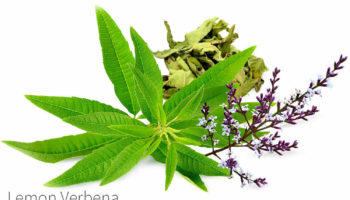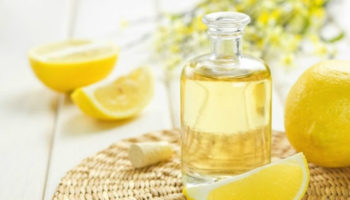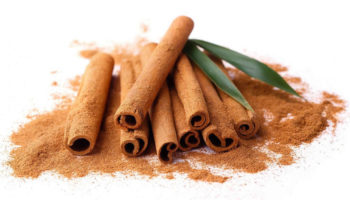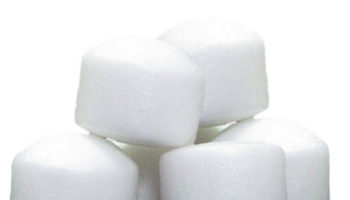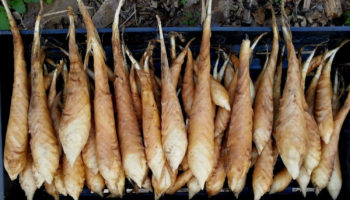What is black salve
Black salve was originally developed by an American surgeon, Jesse Fell, its use first reported in the 1850s 1. Fell had heard of a plant growing on the shores of Lake Superior used by Native Americans to treat cancer 2. He identified it as S. canadensis, combining it with zinc chloride to make a cancer salve known as Fells’ paste 3. Since then, other entrepreneurs have developed topical cancer therapies based on these two core ingredients, today’s formulations being known as black salve 4. However, the U.S. Food and Drug Administration has listed black salve as a “fake cancer cure” and warns consumers to avoid it 5, 6, 7.
Black salves usually contain bloodroot, the rhizome of Sanguinaria canadensis 8. Manufacturers have differing formulations that may also contain chaparral (Larrea mexicana), graviola (Annona muricata), oleander (Nerium oleander), galangal (Alpinia officinarum), ginger (Zingiber officinale), red clover (Trifolium pratense), sheep sorrel (Rumex acetosella), burdock (Arctium lappa), pokeroot (Phytolacca decandra), and turmeric (Curcuma longa) 8. Sanguinaria canadensis, also known as bloodroot, is a traditional medicine used by Native Americans to treat a diverse range of clinical conditions 2. The rhizome of the plant, also known as bloodroot because of its red latex, contains a number of biologically active alkaloids and have been associated with clinical toxicities ranging from mouthwash induced leukoplakia to cancer salve necrosis and treatment failure 2. The association of S. canadensis containing mouthwash with the development of leukoplakia and a murine model suggesting sanguinarine acts as a tumor promoter highlights the urgent need for studies into black salve carcinogenesis.
Apart from its botanical ingredients, black salve contains zinc chloride (ZnCl2) with some formulations also containing dimethyl sulfoxide (DMSO). ZnCl2 is a chemical usually manufactured from zinc and hydrochloric acid and does not occur naturally apart from the very rare mineral simonkolleite Zn5(OH)8Cl2H2O 9. Zinc chloride (ZnCl2) is widely used for industrial processes such as textile manufacture and metallurgical fluxes for soldering galvanized iron 10. The zinc chloride (ZnCl2) contained in black salve is a synthesized chemical and in some preparations the main ingredient by weight.
Dimethyl sulfoxide (DMSO) is added to enhance the epidermal penetration of some black salve formulations. Although trace amounts of dimethyl sulfoxide may be naturally found in cereals, fruits, and vegetables 11, dimethyl sulfoxide (DMSO) is commercially manufactured from lignin, a byproduct of paper production 12. DMSOs’ chemical synthesis utilizes lignins free methyl radicals; these are coupled to sulphur and then oxidized 13.
An increasing number of patients are turning to the Internet to provide them with information about healthcare and treatment options. As an unregulated space, there is the potential for inaccurate or misleading claims to result in choices leading to harmful health outcomes.
Patients seeking natural skin cancer therapies may not realize black salve contains significant quantities of synthetic chemicals. This knowledge may alter the treatment choices of complementary and alternative medicines patients, a population often wanting to reduce their exposure to unnatural compounds 14.
Conclusion
Black salve is not a natural therapy. It contains significant concentrations of synthetic chemicals. Black salve does not appear to possess tumour specificity with in vitro (test tubes) and in vivo (animal studies) evidence indicating normal cell toxicity 8. The use of black salve should be restricted to clinical research in low risk malignancies located at low risk sites until a better understanding of its efficacy and toxicity is developed. Clinicians should engage with patients and discourage black salve use, especially for high risk skin cancers and those in cosmetically sensitive areas 2.
For topics on skin cancer please go here: Skin cancer
- Shaw A. D. M. C., Moore C. H., Henry M. Editorial. Western Lancet, A Monthly Journal of Practical Medicine and Surgery. 1857;18:541–542.[↩]
- Croaker A, King GJ, Pyne JH, Anoopkumar-Dukie S, Liu L. Sanguinaria canadensis: Traditional Medicine, Phytochemical Composition, Biological Activities and Current Uses. Choi CW, ed. International Journal of Molecular Sciences. 2016;17(9):1414. doi:10.3390/ijms17091414. https://www.ncbi.nlm.nih.gov/pmc/articles/PMC5037693/[↩][↩][↩][↩]
- Fell J. W. DR. Fell’s treatment of cancer. The Lancet. 1857;70(1785):p. 507. doi: 10.1016/s0140-6736(02)37776-6.[↩]
- Elston D. M. Escharotic agents, Fred Mohs, and Harry Hoxsey. Journal of the American Academy of Dermatology. 2005;53(3):523–525. doi: 10.1016/j.jaad.2005.04.091. https://www.ncbi.nlm.nih.gov/pubmed/16112367[↩]
- Illegally Sold Cancer Treatments. U.S. Food and Drug Administration. https://www.fda.gov/forconsumers/protectyourself/healthfraud/ucm533465.htm[↩]
- Health Fraud Awareness. U.S. Food and Drug Administration. https://www.fda.gov/downloads/forconsumers/protectyourself/healthfraud/ucm167504.pdf[↩]
- 187 Fake Cancer “Cures” Consumers Should Avoid. U.S. Food and Drug Administration. https://www.fda.gov/Drugs/GuidanceComplianceRegulatoryInformation/EnforcementActivitiesbyFDA/ucm171057.htm[↩]
- Croaker A, King GJ, Pyne JH, Anoopkumar-Dukie S, Liu L. A Review of Black Salve: Cancer Specificity, Cure, and Cosmesis. Evidence-based Complementary and Alternative Medicine : eCAM. 2017;2017:9184034. doi:10.1155/2017/9184034. https://www.ncbi.nlm.nih.gov/pmc/articles/PMC5299188/[↩][↩][↩]
- Schmetzer K., Schnorrer-Kohler G., Medenbach O. Wulfingite, epsilon-Zn(OH)2, and simonkolleite, Zn5(OH)8Cl2.H2O, two new minerals from Richelsdorf, Hesse, F.R.G. Neues Jahrbuch fur Mineralogie, Monatshefte. 1985;(4):145–154.[↩]
- Jha M. K., Kumar V., Singh R. J. Review of hydrometallurgical recovery of zinc from industrial wastes. Resources, Conservation and Recycling. 2001;33(1):1–22. doi: 10.1016/S0921-3449(00)00095-1.[↩]
- Pearson T. W., Dawson H. J., Lackey H. B. Naturally occurring levels of dimethyl sulfoxide in selected fruits, vegetables, grains, and beverages. Journal of Agricultural and Food Chemistry. 1981;29(5):1089–1091. doi: 10.1021/jf00107a049. https://www.ncbi.nlm.nih.gov/pubmed/7309994[↩]
- Capriotti K, Capriotti JA. Dimethyl Sulfoxide: History, Chemistry, and Clinical Utility in Dermatology. The Journal of Clinical and Aesthetic Dermatology. 2012;5(9):24-26. https://www.ncbi.nlm.nih.gov/pmc/articles/PMC3460663/[↩]
- David N. A. The pharmacology of dimethyl sulfoxide. Annual review of pharmacology. 1972;12:353–374. doi: 10.1146/annurev.pa.12.040172.002033. https://www.ncbi.nlm.nih.gov/pubmed/4556944[↩]
- Bishop F. L., Yardley L., Lewith G. T. A systematic review of beliefs involved in the use of complementary and alternative medicine. Journal of Health Psychology. 2007;12(6):851–867. doi: 10.1177/1359105307082447. https://www.ncbi.nlm.nih.gov/pubmed/17956965[↩]

